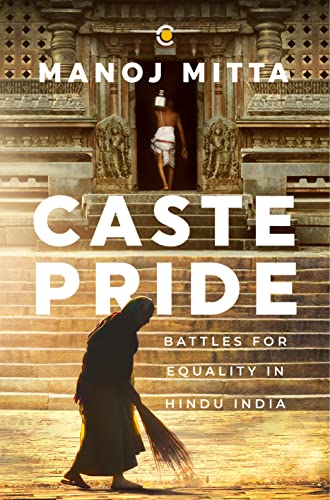Why I Picked This Book?
Caste Pride: Battles for Equality in Hindu India talks about the caste system and the legal battles fought against it. This was a new perspective on the caste system and caste inequalities, the fight for equality based on or irrespective of caste, and the opposition to it. I am interested to know why the caste system has existed in India for so long and how it is so difficult to get rid of it even after seventy-five years of Independence. To know more about the caste system through the lens of law I decided to read this one.
The Book
Caste Pride is a phenomenon where people from one caste find another person of a caste lower than her/him and gets solace in the fact that she/he is not at the bottom rung of the caste hierarchy. The caste system is so inherent in India that we take it for granted. Especially if you happen to be from the so-called “upper caste”. There are so many people I came across who don’t acknowledge the caste system and would say it does not exist now. Though the same people most of the times speak vehemently against reservation. You can only see the ills of the caste system if you are either a victim of it or you acknowledge it because you have read and researched about it.
Caste Pride – Battles For Equality In Hindu India is a fine work by Manoj Mitta that tracks down the caste system through the lens of law. It captures the legal battles of the Dalits and untouchables for equality. The caste system was always a part of the Hindu religion, there are several examples of it in the Hindu religious texts. When the Britishers came to India and took control of certain parts of India, they established some laws to control the people of India. They were cautious while dealing with the customs, traditions, and religious practices of the people, especially the upper caste people, to appease them. So, there were different laws for different people. The differentiation of caste was not touched upon, or one can say was cemented by the initial laws established by the British.
Manoj Mitta takes the readers from the early years when laws were implemented by the British people to post independant India through various legal battles for equality. There are examples of how the punishment of “confined to stock” depended not on the offence or the gravity of the offence but on the caste identity of the offenders. Another example is the right of women from a specific caste to cover their breasts. Some upper caste people objected to covering the breasts by lower cast women because it was a way of identifying the lower caste women from the upper caste women. One common thing from two centuries ago till now is that Orthodox upper caste Hindu people opposed most of the legal reforms to bring equality. They are the ones who wanted the status quo to enjoy supremacy over the majority of people on the sheer basis of the lottery of birth.
The author documents and brings out many known and famous cases along with many unknown but landmark cases in the fight against untouchability and towards equality. Many would not know that a progressive leader like Motilal Nehru would appear for the accused Brahmins in a sati case. Similarly, most of the leaders of the Indian freedom struggle were supporters of the caste system and Varna system, and some were vehemently against any legal reforms.
While reading the book, one would get to know the views of many leaders on the caste system. One would get to know the contribution of Ambedkar and other Dalit leaders as well as progressive leaders from upper castes who fought legal battles against the caste system and it’s evil. Imagine people fighting legal battles to drink water from a well, legal battles to walk on roads, and legal battles to enter temples and schools. The book is a goldmine of information, capturing all such legal battles in colonial as well as post colonial India.
It is sad to know that the legal battle of seeking equality that started two centuries ago is still not fully achieved. We have the rules and laws in place to enforce prevention of untouchability we still see atrocities against Dalits and tribal people. It is nothing but the caste pride of certain people that makes them blind to the fact that people cannot be put into caste hierarchy just because of the lottery of birth.
Reading about the caste related violence that still happens, we have a long way to go ahead towards a more equal society. A society where people are not discriminated based on their birth and the kind of job they do. Caste pride is deeply seeded into our psyche, and the sooner we get rid of it, the better it is for us. The only impediment is the Orthodox Hindu upper caste who still believe in the Varna system and its supremacy.
About The Author
Manoj Mitta is a Delhi-based journalist focusing on law, human rights and social justice. A law graduate from Hyderabad, he has worked with the Times of India, the Indian Express and India Today. Mitta has written two critically acclaimed books on impunity for mass violence: When a Tree Shook Delhi: The 1984 Carnage and Its Aftermath, co-authored with H.S. Phoolka (2007), and The Fiction of Fact-finding: Modi and Godhra (2014). His article on caste was published in 2007 in Writing a Nation: An Anthology of Indian Journalism, edited by Nirmala Lakshman.
Our Verdict
Caste Pride – Battles For Equality In Hindu India is a must read for everyone to understand that how legal battles were fought by Dalits and untouchables to get equal rights in a country who constitution considers every citizen equal before them.
